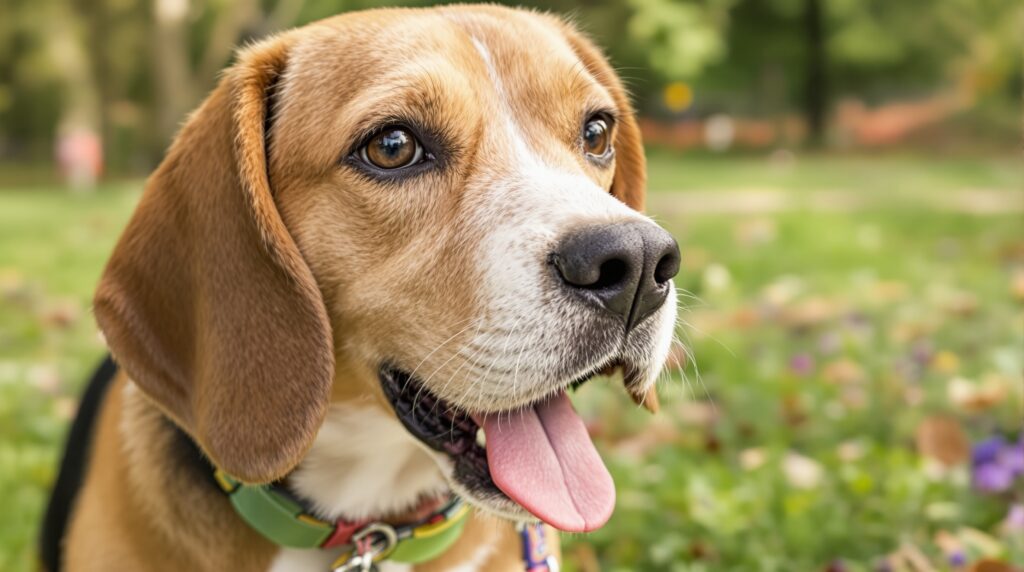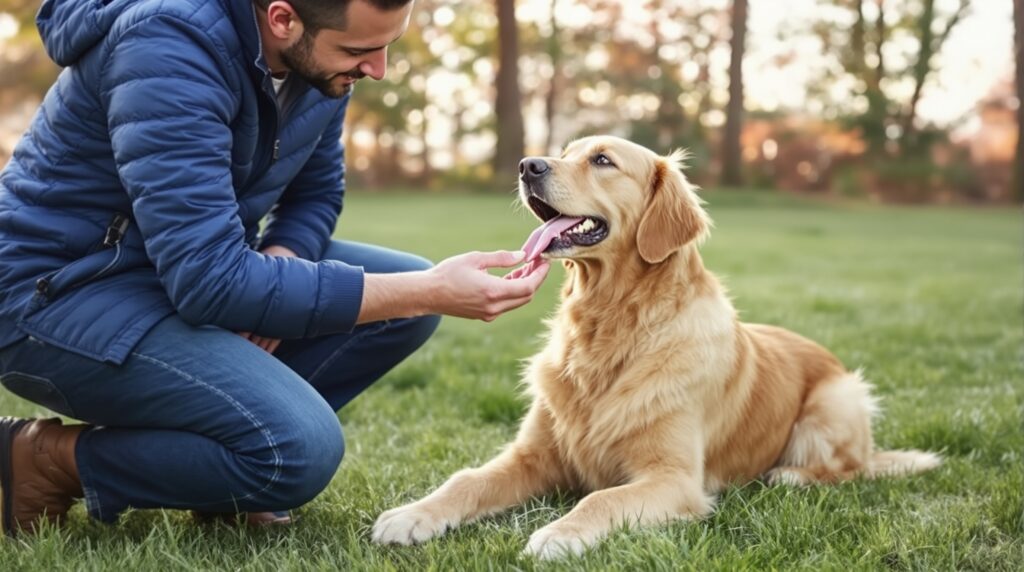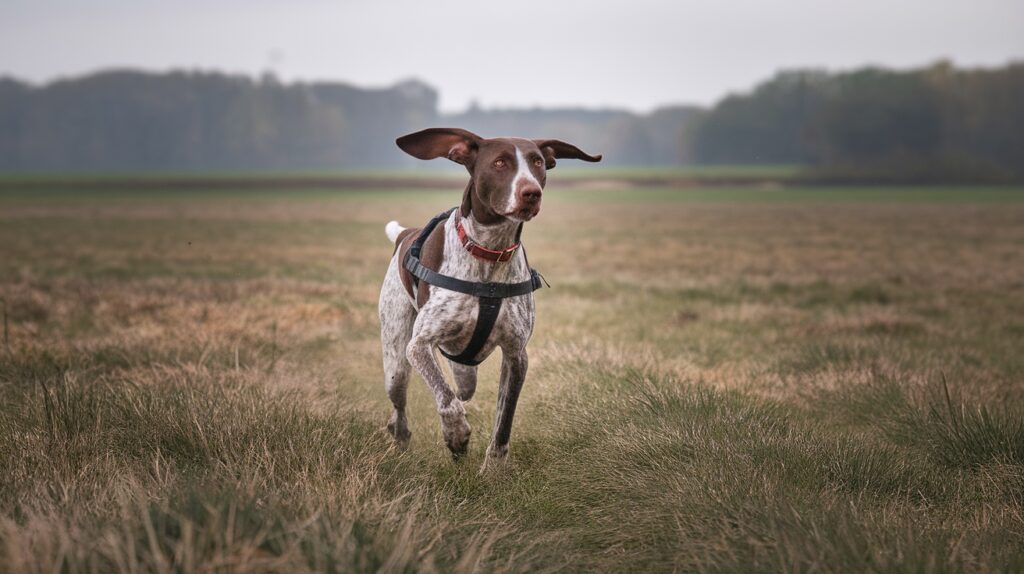Training a Beagle can be tough. Their curious nature and powerful noses mean they’re easily distracted by scents, sounds, and movement.
Learning simple tricks to hold their focus can make training smoother and more enjoyable for both the dog and the owner.
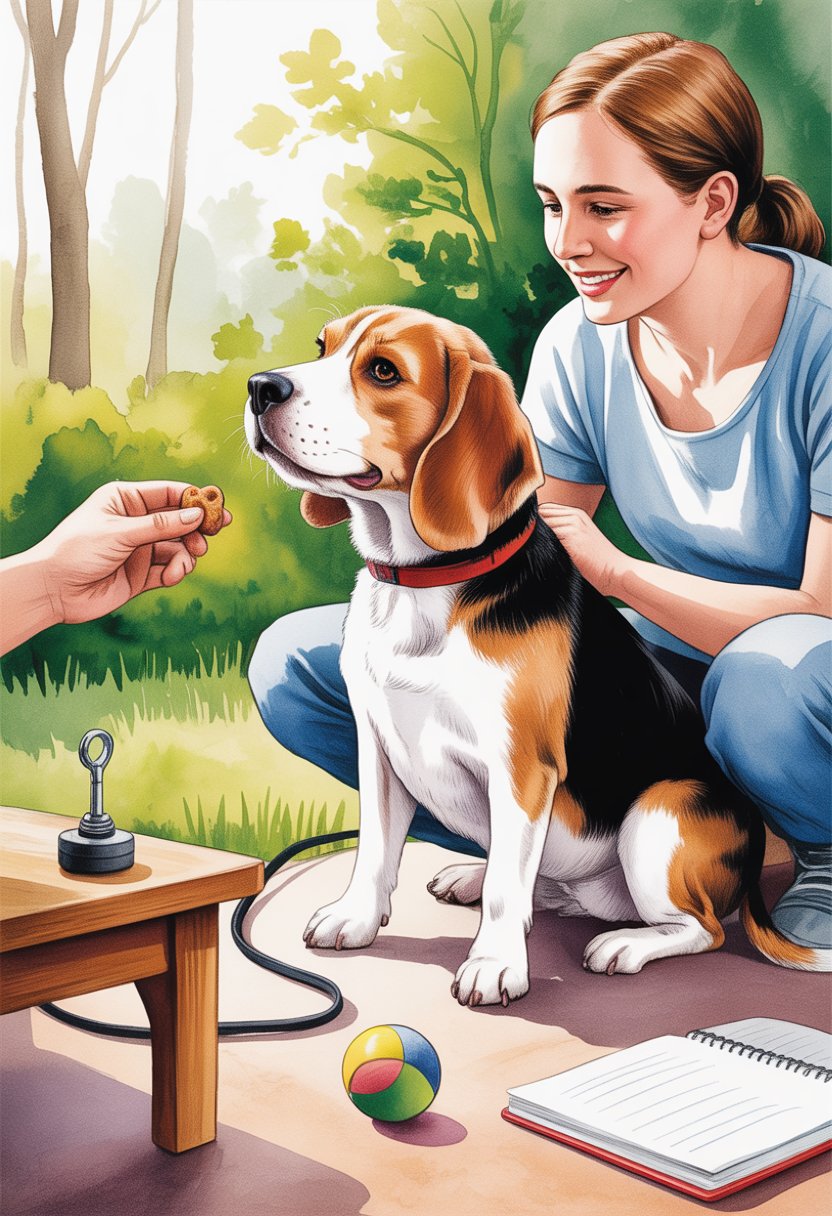
With the right approach, Beagles can stay engaged and respond well to training. Here are some practical ways to create a great environment, use effective methods, and keep sessions fun so your Beagle learns without getting bored.
Use high-value treats as positive reinforcement
High-value treats can keep a Beagle’s attention during training. These snacks—think tiny bits of cheese or cooked chicken—are way more exciting than kibble.
The stronger appeal makes it easier for your dog to focus on you and the lesson. Timing matters, too.
Give the treat right after your Beagle does the right thing. That way, your dog connects the action and the reward.
High-value treats are especially helpful for new or tough skills. They’re also handy in distracting places, like parks or busy sidewalks.
As your dog improves, mix in less exciting treats, some praise, or a quick play session. Switching it up keeps your Beagle interested and prevents reward fatigue.
Keep training sessions short and engaging
Beagles are curious but get bored fast. Long lessons just make them lose focus or get cranky.
Most trainers say 5 to 10 minutes is the sweet spot for a session. That’s enough practice without overwhelming your pup.
Repeat these short sessions daily for steady progress. Mix things up—throw in games, new tricks, or commands.
That little bit of variety makes training feel like play. Rewards work wonders during these short sessions.
Treats, praise, even a quick game—whatever gets your Beagle excited to participate. Over time, your dog will start seeing training as something fun.
Take regular breaks, too. A quick pause after a few minutes helps your Beagle reset and come back ready to focus.
Incorporate scent games to tap into their natural instincts
Beagles have one of the strongest senses of smell out there. Tracking and sniffing are in their DNA.
Using scent games during training gives them a healthy outlet for that instinct. Try hiding treats around the house or yard.
They love searching, and it keeps them focused. Start with easy spots so it doesn’t get frustrating.
Toys or scent trails work, too. These activities give your Beagle’s brain a workout and help reduce boredom.
A busy mind is less likely to wander during training. Adding scent play into your routine can strengthen your bond.
For Beagles, using their nose feels like a reward in itself.
Use clicker training to mark desired behaviors
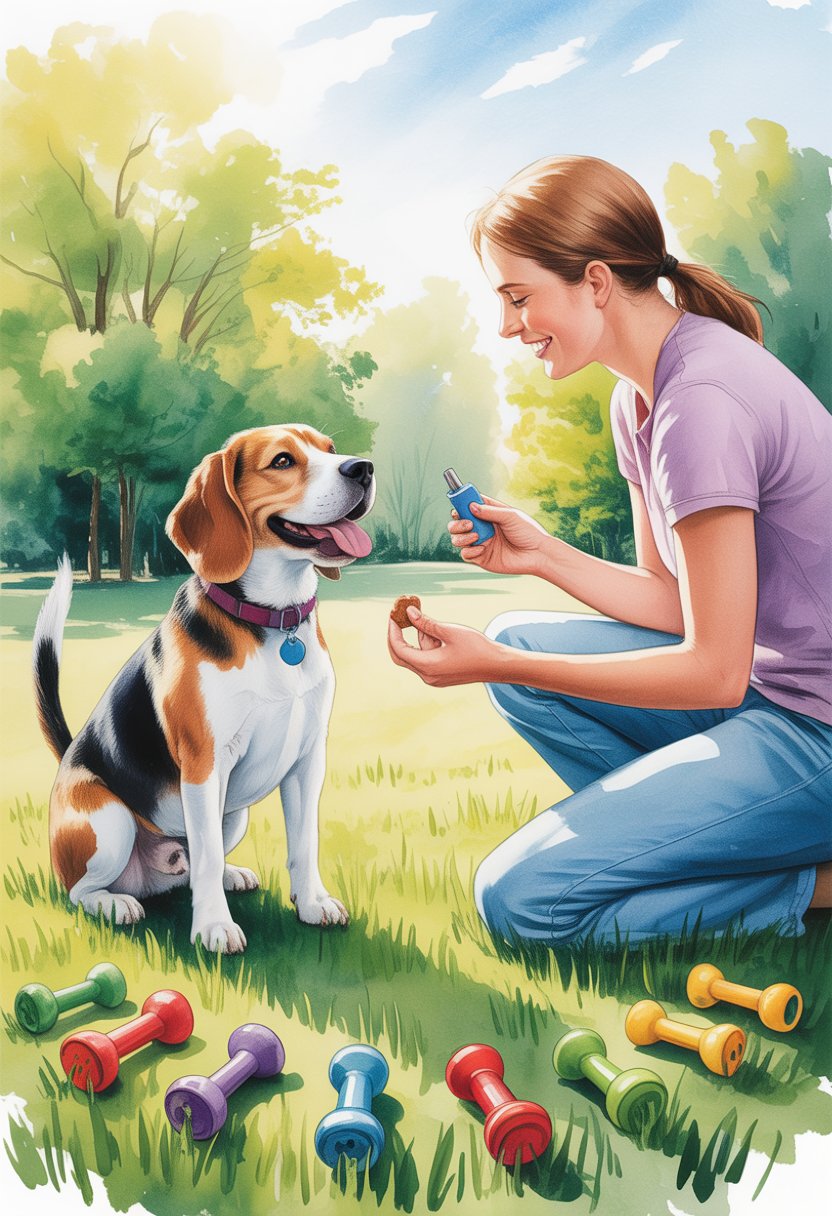
Clicker training gives your Beagle a clear signal when it gets it right. The click marks the exact moment of the desired behavior.
Pair the click with a treat, and the dog quickly learns that the sound means good things are coming. That makes training sessions more focused.
The sharp click cuts through distractions, which is great for Beagles. Click the instant your Beagle follows a command—like sitting or staying calm.
Immediate marking helps your dog connect the dots. Short, regular sessions work best.
With time and patience, clicker training can really boost your Beagle’s attention and make lessons more enjoyable.
Train in a quiet environment to minimize distractions
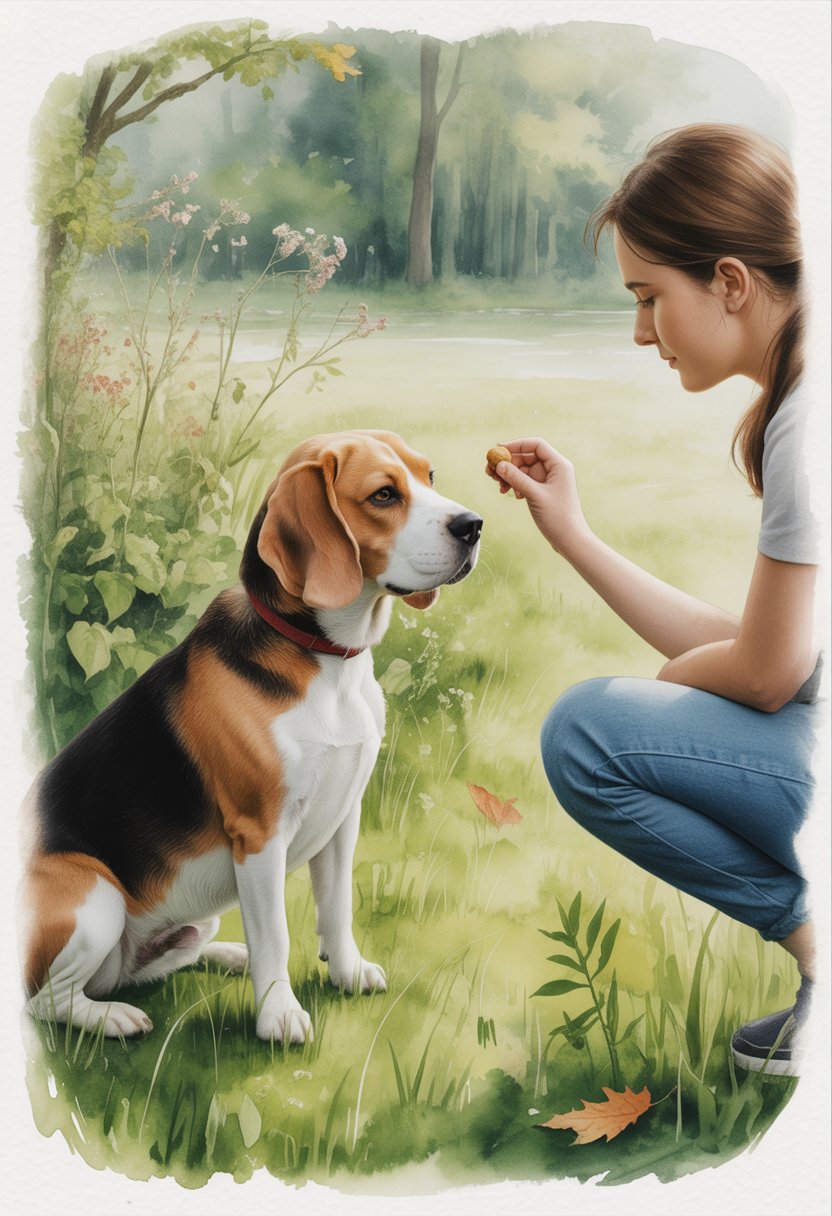
A calm space helps your Beagle focus way better. Loud noises, people walking by, or other pets can steal their attention in a flash.
Start in a quiet room or backyard. When the environment is chill, your Beagle can actually listen to you.
This makes it much easier for them to connect commands and rewards. You’ll both feel less stressed.
Once your dog gets the basics, slowly add a few mild distractions. That way, your Beagle learns to focus even when things get a little busy.
Short sessions in a quiet spot help prevent boredom, too. Your dog will stay engaged and look forward to the next lesson.
Provide plenty of physical exercise before training
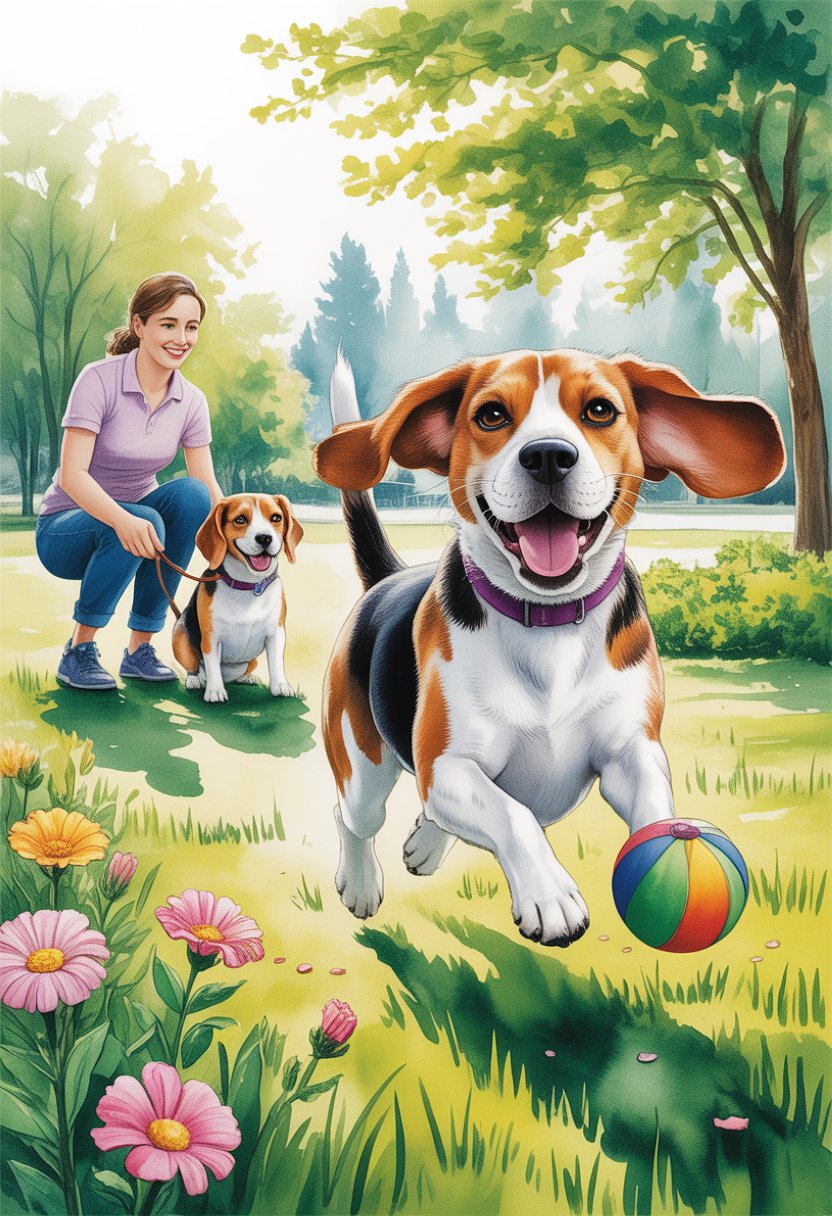
Beagles are bundles of energy. If they don’t get enough activity, they get restless.
A short walk or play session before training helps burn off that extra energy. It’s way easier for them to settle down and pay attention afterward.
Experts say Beagles need about 90 minutes of exercise each day, split into two or more sessions. A brisk walk, fetch, or safe off-leash run usually does the trick.
Physical exercise also cuts down on unwanted behaviors like barking or pacing. When they’re physically satisfied, they’re more open to learning.
Even a quick 15-minute activity before practice can make a difference. Choose what fits your dog’s age and health—the key is to take the edge off without wearing them out.
Use interactive toys to maintain mental stimulation
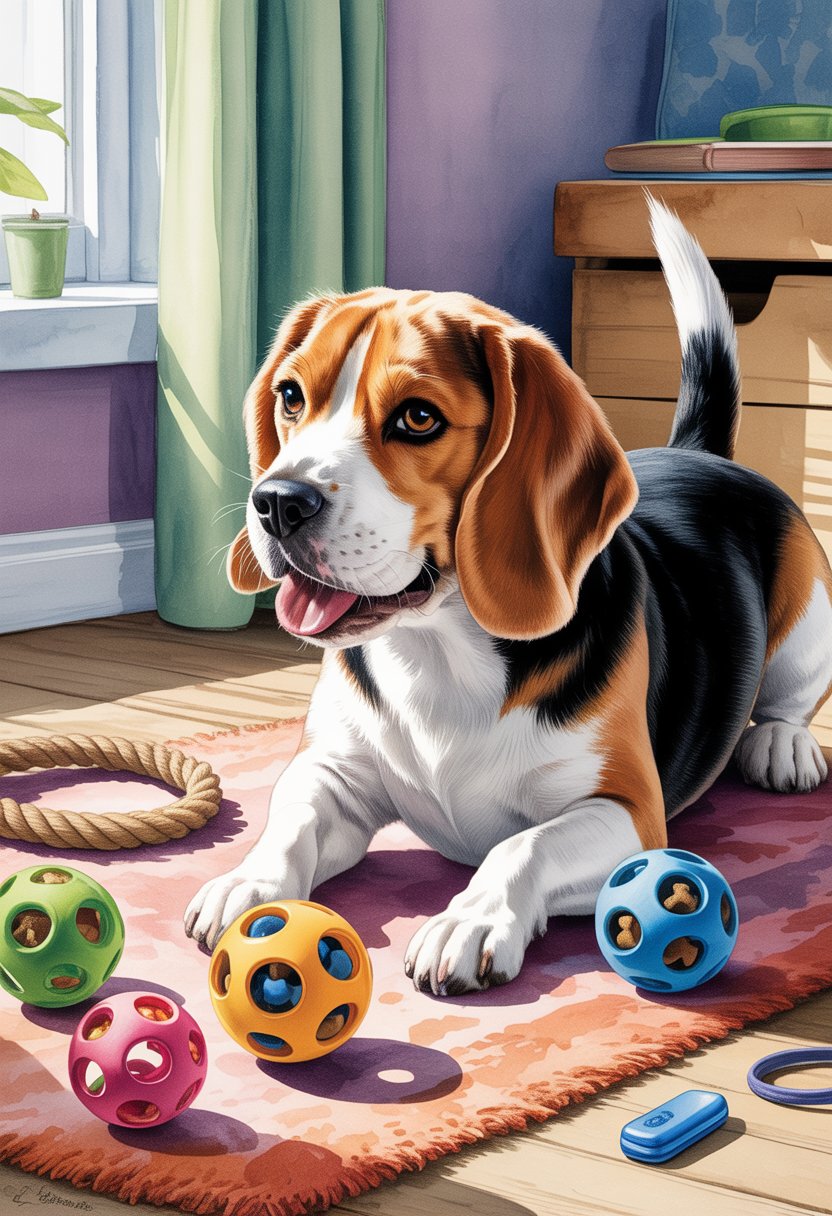
Interactive toys give Beagles a chance to use their brains while having fun. Puzzles, treat dispensers, toys with moving parts—they all keep your dog engaged.
When your Beagle works to unlock a treat, it learns patience and focus. This can spill over into training, making your dog more likely to pay attention.
Toys that involve sniffing are especially helpful, since Beagles love to use their noses. Hide food or create scent trails for longer play.
This kind of activity also helps burn off excess energy and reduces boredom. Rotate different interactive toys to keep things interesting.
A fresh toy or new challenge keeps your Beagle curious and motivated, which makes training way easier.
Understanding Beagle Behavior
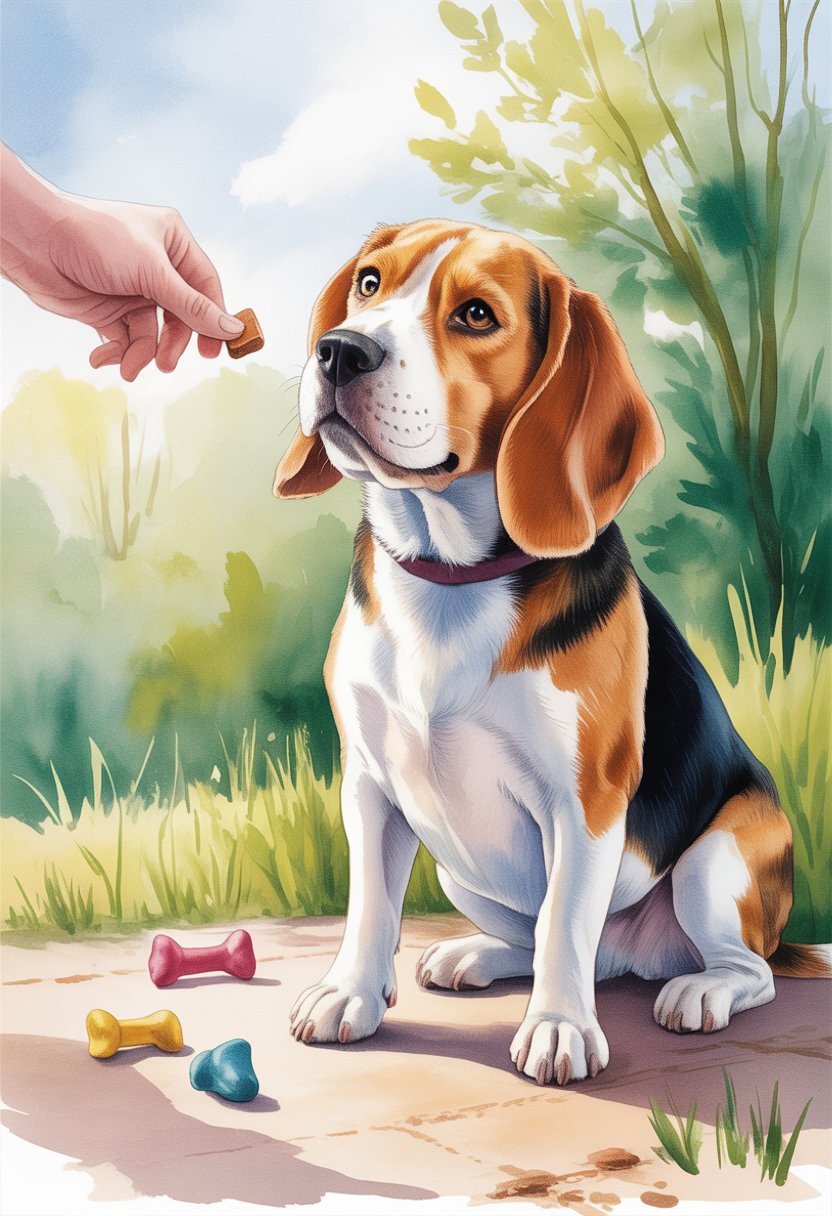
Beagles are curious, energetic, and often let their instincts take the wheel during training. Their drive to explore and sniff makes them smart, but also easily distracted.
Why Beagles Get Distracted
Beagles lose focus because of their natural hunting roots. They were bred to track small game, so sights, sounds, and smells grab their attention fast.
Even tiny movements or noises can pull them away from training. Their high energy adds another challenge.
A Beagle who doesn’t get enough exercise might have trouble sitting still. Regular walks and play help with that.
Keeping training sessions short—say, 5–10 minutes—makes a big difference. Too much repetition can bore them, so use treats or toys to keep things interesting.
Key points to manage distractions:
- Provide daily exercise before training
- Use short, structured sessions
- Keep rewards ready to maintain interest
The Role of Scent in Training
A Beagle’s nose is its superpower. With one of the best senses of smell among dogs, they’ll follow a scent trail without thinking twice.
During training, smells in the environment compete with you for attention. A dropped crumb or a whiff of another animal can pull your dog away.
Instead of fighting it, why not use it? Scent-based games—like hiding treats or toys—tap into their natural skills and keep them focused.
Pairing commands with scent rewards teaches them that listening pays off. Carry a treat pouch and reward your Beagle right after it gets it right.
That way, the behavior gets linked to food and scent, which helps with focus.
Creating a Positive Training Environment
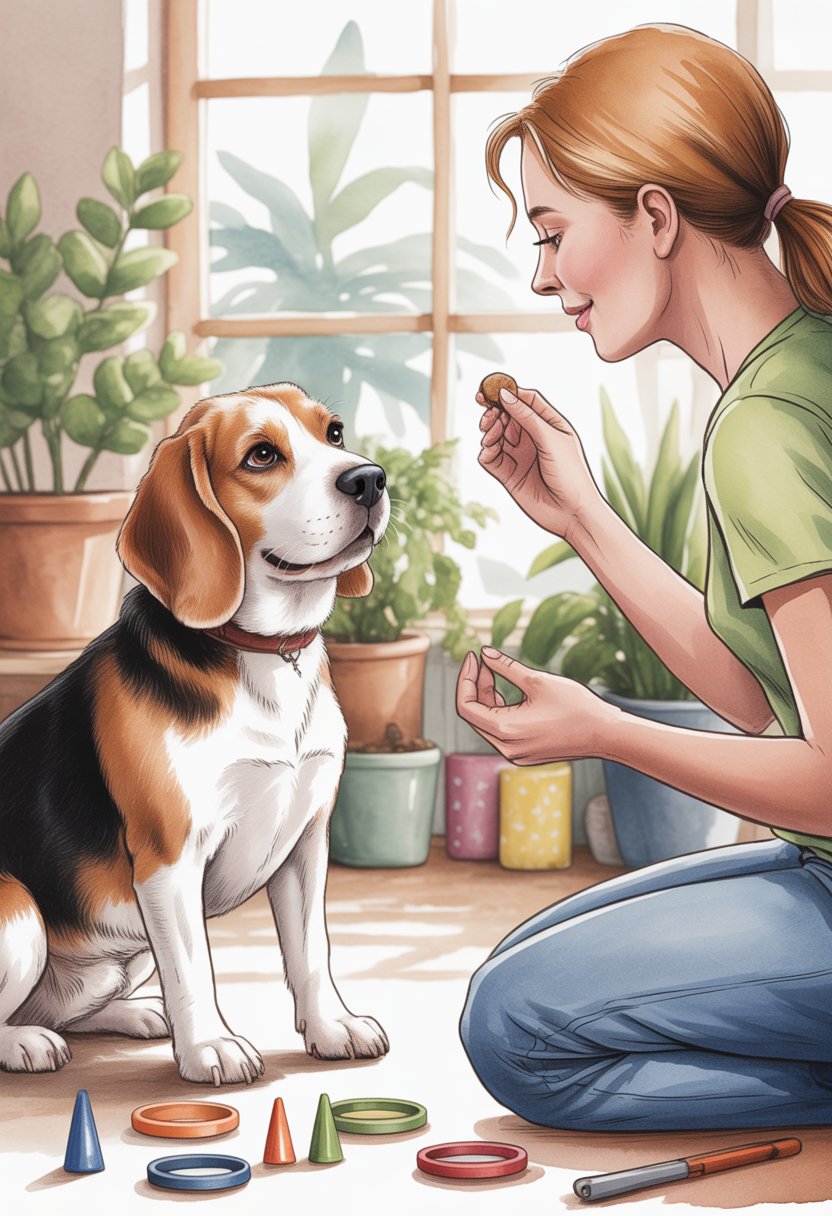
A calm, structured setting helps your Beagle stay engaged and learn faster. Reducing interruptions and pairing training with clear rewards makes it easier for your dog to connect actions with outcomes.
Minimizing Distractions at Home
Beagles’ strong noses can get them off track if too much is going on. Training in a quiet room or fenced yard helps limit distractions.
Try these small changes to help your Beagle focus:
- Turn off the TV or radio during sessions.
- Keep toys and food out of sight unless they’re part of the training.
- Close doors or gates to keep other pets out.
Stick to short, 5–10 minute sessions, and start in the same spot each time. Once your Beagle responds well in a calm space, you can slowly add distractions.
That way, your dog learns to listen—even when the world isn’t so quiet.
Using Rewards to Boost Focus
Beagles really respond to positive reinforcement. Give them something they love right after they do what you want, and they’ll start to connect the dots.
Not every Beagle likes the same thing. Some are all about small food treats. Others get excited by a favorite toy or just some extra praise.
Keep rewards small, quick, and consistent. If you drag it out or overdo it, your dog might just lose interest.
Try mixing up your rewards:
- High-value treats (think little bits of chicken) for those tough commands.
- Verbal praise or a good scratch for easier, repeated tasks.
- Playtime as a bonus after a few solid training sessions.
Switching up rewards helps keep training fresh. It gives your Beagle a reason to pay attention instead of getting distracted by whatever’s out there.

